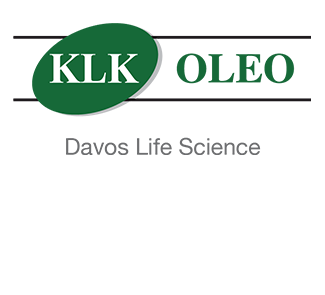![]()
1861 Valley View Ln., #180
Farmers Branch, TX 75234
Phone: (972) 255-3918
Human Clinical Trials on Lactobacillus fermentum ME-3: A Glutathione-Producing Probiotic Bacterium
Glutathione is one of the most amazing molecules in the human body, yet many people are not aware of it because it is not a supplement that can be effectively taken orally. Glutathione is made in every cell throughout the body and it is called the “Master Antioxidant” and also the “Master Detox Agent.”
Glutathione’s “job” is to protect all the components inside every cell in your body against free radical damage. In fact, glutathione protects more of your body than all the other antioxidants combined. In addition to glutathione being an antioxidant, it also recycles or regenerates other oxidized or “used up” antioxidants like vitamins C and E and coenzyme Q10 back to their active form.
Glutathione is a critical participant in virtually all the body’s detoxification processes. In the past 50 years or so, exposure to environmental toxins has increased exponentially. As a result, people’s glutathione levels have been increasingly depleted. Depleted glutathione levels results in greater body burden of toxins, increased free radical damage and accelerated aging. Thus, keeping glutathione at optimal levels is critical for healthy aging. On average, it has been estimated that after age 20, people’s ability to synthesize glutathione declines by about 1 percent per year. This could be a major contributing factor to why health problems accelerate as people age.
Structurally, glutathione is called a tripeptide because it consists of three amino acids, glutamate, cysteine and glycine. Glutathione is not effective when taken orally because it gets broken down before it can be absorbed.
Many things people are commonly exposed to deplete glutathione levels such as: alcohol, artificial sweeteners, tobacco smoke, acetaminophen/Tylenol, toxic metals like mercury, artificial food dyes, agricultural pesticides and herbicides and also, many common household chemicals. Also, the diet of many Americans is nutritionally deficient, which contributes to low glutathione levels.
Glutathione levels, especially the immune system, the nervous system, the gastrointestinal system, and the lungs and liver, influence every system in the body.
Several nutritional supplements have been shown to be somewhat helpful at boosting glutathione levels such as N-acetyl cysteine, selenium and lipoic acid as well as the herb milk thistle. Also, some companies are now marketing oral glutathione supplements in liposomal delivery forms. Liposomal delivery does result in better absorption, but the glutathione still gets oxidized relatively quickly so it does not stay active very long. Some physicians administer IV glutathione to patients but again; the glutathione gets oxidized within a day or two. Most people cannot afford the time or the money to schedule appointment at a doctor’s office every two or three days for IV glutathione treatments.
Revolutionary Breakthrough: A unique strain of probiotic bacteria named Lactobacillus fermentum ME-3 (often called ME-3) has been found to synthesize glutathione. Lactobacillus fermentum ME-3 was initially isolated from the intestinal tract of a healthy 1-year-old child in 1995. When ME-3 was tested, researchers discovered that it had remarkably high antioxidant activity. Over the past 20 years, scientists have been studying ME-3 trying to learn how and why it generates its antioxidant effects.
A Complete Glutathione System: Scientists have discovered that ME-3 boosts glutathione levels via three independent mechanisms. The bacteria synthesize glutathione, it can extract it from the surrounding environment and it also regenerates oxidized or “used up” glutathione back to its reduced or active state. To date, ME-3 is the only organism or substance known that is able to boost glutathione levels by three independent mechanisms simultaneously. Consequently, scientists are referring to Lactobacillus fermentum ME-3 as a Complete Glutathione System.
Human Clinical Trials: Results from human clinical trials conducted with Lactobacillus fermentum ME-3 report the following:
a. 16 percent reduction in LDL cholesterol
b. 20 percent reduction in 8-isoprostanes
c. 49 percent increase in reduced glutathione
d. 26 percent increase in total antioxidant activity
Summary: One of the most important things an individual can do to promote and maintain good health is to boost his or her glutathione levels. Until recently there wasn’t an effective way to accomplish this. However, now people can take products that contain the probiotic bacteria Lactobacillus fermentum ME-3 and significant boost in glutathione levels. The net result is better detoxification, increased protection against free radicals and a healthier aging process.
For more information about products that contain Lactobacillus fermentum ME-3, visit www.essentialformulas.com and click on Reg’Activ.
References:
1 Konstantinidis KT, Tiedje JM, Towards a Genome-Based Taxonomy for Prokaryotes. J Bacteriol. Sep 2005; 187(18):6258-6264.
2 Mikelsaar M, Zilmer M., Lactobacillus fermentum ME-3…Microb Ecol Health Dis. Apr 2009;21(1):1-27.
3 Sepp E., et al., Intestinal microflora of Estonian and Swedish infants. Acta Paediatr. 1997 Sept;86(9):956-61.
4 Mikelsaar M, Zilmer M., Lactobacillus fermentum ME-3…Microb Ecol Health Dis. Apr 2009;21(1):1-27.
5 Mikelsaar M, Zilmer M., Lactobacillus fermentum ME-3…Microb Ecol Health Dis. Apr 2009;21(1):1-27.
6 Mikelsaar M., Probiotic lactobacilli in antioxidative defense. http://omicsonline.org/speaker/Marika_Mikelsaar_University_Of_Tartu_Estonia_Probiotics2013.
7.UT Professor Marika Mikelsaar Receives Prestigious EU Award: http://www.ut.ee/en/ut-professor-marika-mikelsaarreceives-prestigious-eu-award.
8 Kullisaar T., et al., Complete glutathione system in probiotic Lactobacillus fermentum ME-3. Applied Biochemistry & Microbiology; Sep 2010, 46(5):481.
9 Ibid., p. 481. 10 US Patent, 20040151708 A1:. www.google.com/patents/us20040151708.
11 Fariss MW, et al., Role of Mitochondria in Toxic Oxidative Stress. Molecular Interventions. April 2005; 5(2):94-111.
12 Hutt P, et al.,. Journal of Applied Microbiology. 2006; Vol. 100:1324-1332.
13 Central European Journal of Biology 2011, vol. 6(1).
14. Mikelsaar M, Zilmer M., Lactobacillus fermentum ME-3…Microb Ecol Health Dis. Apr 2009;21(1):1-27.
15 Holvoet P.. Acta Cardiol. 2004 Oct;59(5):479-84.
16 Pastore A., et al., Analysis of glutathione: implication in redox and detoxification. Clin Chim Acta. 2003 Jul 1:333(1);19-39.
17 Wu G., et al., Glutathione metabolism and its implications for health. J Nutr. 2004 Mar;134(3):489-92.
18 Mikelsaar M, Zilmer M., Lactobacillus fermentum ME-3…Microb Ecol Health Dis. Apr 2009;21(1):1-27.
19 US Patent WO 2014102692 A1: Method of treatment using Lactobacillus fermentum me-3. www.google.com/patents/wo2014102692a1?cl=en
20 Mikelsaar M, Zilmer M., Lactobacillus fermentum ME-3…Microb Ecol Health Dis. Apr 2009;21(1):1-27.
21 Casida J, Quistad G., (2004). Organophosphate Toxicology: Safety Aspects of Nonacetylcholinesterase Secondary Targets. Chemical Research in Toxicology, Vol.17, No.8, pp. 983-992.
22 Songisepp E. Evaluation of technological and functional properties of the new probiotic Lactobacillus fermentum ME-3. Diss Med Univ Tartuensis; 2005.







